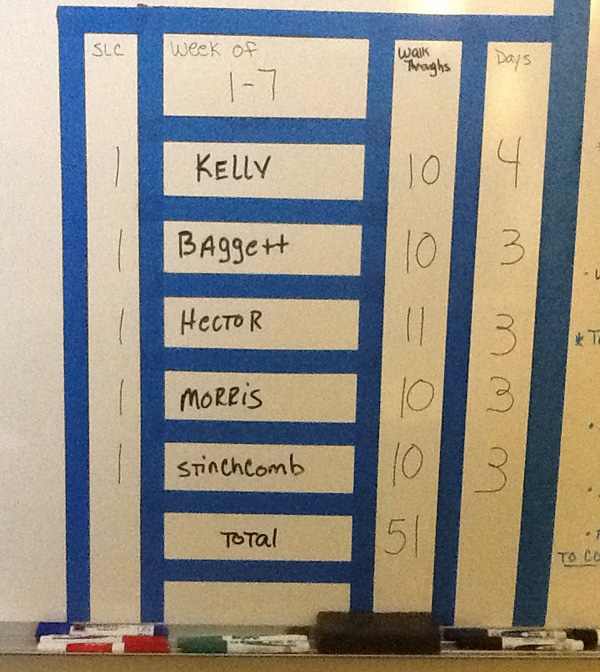In the beginning, our eWalk process was all about checkboxes and the number of completed eWalks we could do in a week. We operated this way for a while thinking that the feedback we were providing to teachers was beneficial.
Little did we know that teachers had a very different opinion of our “eWalks”.
It wasn’t until we conducted a small pilot study of our eWalk program that we learned just how ineffective our eWalk process was. The program itself was great but we were not utilizing it effectively. We failed to consider a very important group of people when we initially developed the walkthrough process; the teachers.
Data gathered during our pilot study clearly indicated that teachers actually wanted us to visit their classrooms. Teachers who participated in the study reported that they enjoyed having administrators visit their rooms. In addition to actually wanting us in their rooms, teachers also indicated that they wanted us to stay in the room longer.
Teachers made it very clear to us that the 3-5 minute walkthrough that produced a set of checked boxes was simply not effective. Teachers wanted more. Teachers wanted us to stay longer so that we could observe more of the class and more of what teachers and students were actually doing during class. So, we listened.
As a result of the pilot study, we changed our eWalk protocols. We decreased the number of walkthroughs required each week so we could spend more time in the classrooms. We continued using the check boxes as we value that data but we added new protocols regarding comments and feedback provided to teachers. We have increased our efforts to provide meaningful comments and feedback to teachers.
Data gathered during our pilot study clearly indicated that teachers actually wanted us to visit their classrooms.
It is an expectation now that the majority of elements in our eWalk template are to have meaningful feedback. The ability to enter text on the walkthrough template, in real time, while we are in the room conducting the walkthrough has become very powerful. Our teachers have expressed on many occasions that they appreciate the comments and feedback we offer as a result of the walkthrough visit.
As they exist now, our walkthrough protocols require each member of the administrative team to conduct at least ten walkthroughs each week. In addition to marking checkboxes for various elements, each walkthrough is to contain comments and feedback for most elements contained in the eWalk template. Our protocols also require that walkthroughs be emailed to teachers no later than 48-hours after the completion of the walkthrough.
This ensures that teachers receive comments and feedback in a timely manner. Our teachers have indicated to us that feedback not provided in a timely manner is of little value. Teachers have stated that the longer they have to wait for a completed walkthrough to be emailed to them the less likely they are to even read it.
At the end of each week, I run an observer report and calculate the number of walkthroughs completed by the administrative team. I list the number of completed walkthroughs by each administrator and post the results on my whiteboard to be reviewed during our administrative meeting on Monday mornings. Virtually everything we do is monitored through eWalk. The walkthrough process is so significant to the progress of our initiatives that it is the first thing we discuss in our administrative meetings.
Virtually everything we do is monitored through eWalk.
Weekly discussions of walkthrough data ensures that we have actual knowledge of what occurs in our school. We share with each other things we have observed during the week noting areas of concern as well as areas where we feel things are going well. Sharing data in this manner increases the accuracy of our information. For example, I may have seen Mr. Kelly spending too much time behind his desk during my last walkthrough of his class.

Agenda from one of our weekly administartive meetings. We start with discussion of our walkthroughs.
When I share this with the administrative staff they will respond either confirming what I observed through observations of their own or offer information to the contrary. If we are not reporting similar behaviors then maybe I just observed Mr. Kelly on a day he needed to spend some additional time behind his desk. If our information is similar we will monitor Mr. Kelly a little more closely and offer him some support through our comments and feedback on the walkthrough template. Either way we have more accurate information as we respond to the educational climate of our school.
Developing this process over the past several years has allowed us to learn a great deal about our school. We cannot speak intelligently to our colleagues, our supervisors, or our community about our school unless we get out of our office and spend time in classrooms. The eWalk program allows us to do just that and provides us with invaluable data at the same time.
